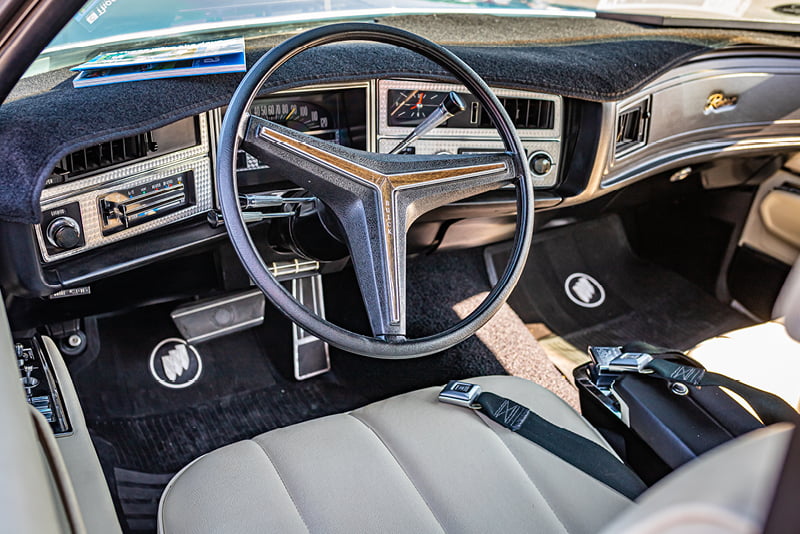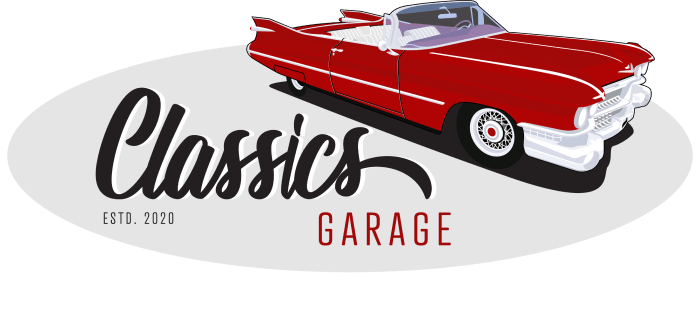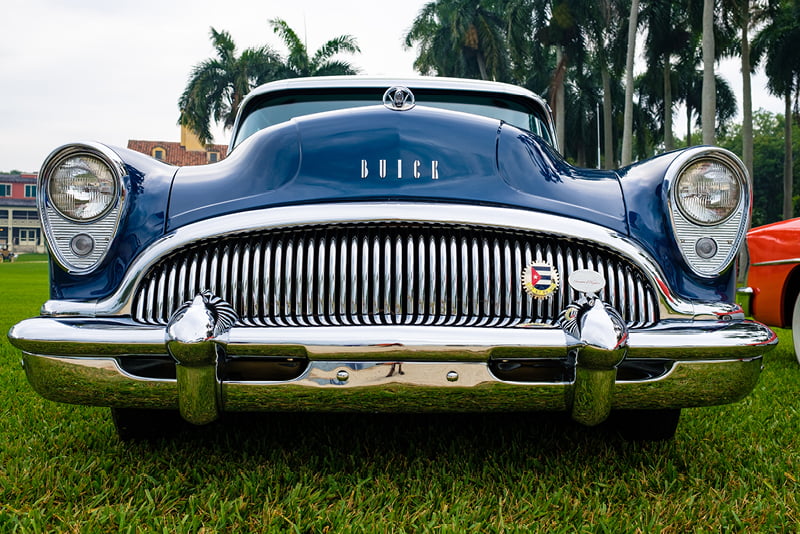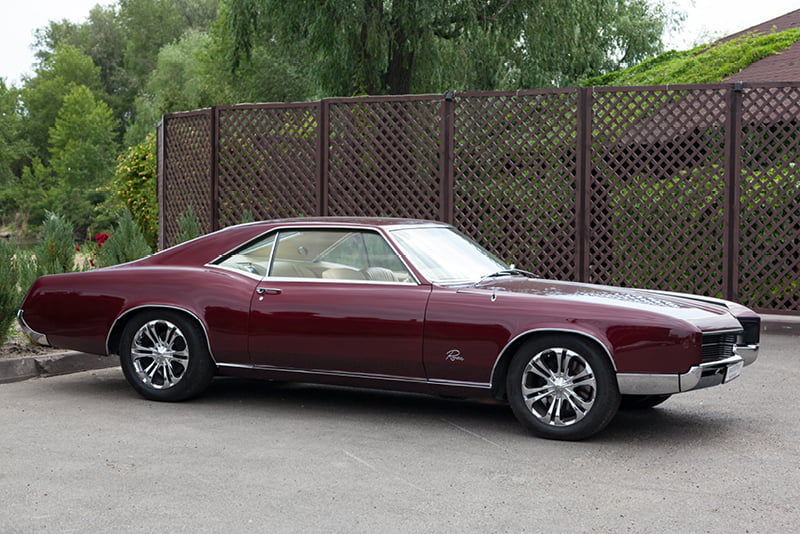While the earlier Buick Riviera models are prized collectors items, the generations of the late sixties are less favoured thanks to the controversial boat tail.
For most of its existence in the North American motor vehicle market, Buick has always been marketed – and in turn, regarded – as a premium automobile. Although positioned slightly higher than other General Motors mainstream brands, Buick was classed as “the next best thing” to the flagship Cadillacs. While regarded as one of the oldest motor vehicle brands in the world, Buick is also one of the few to have remained steadfast right through into the 21st Century.
After the widely celebrated and long yearned for end of World War II, Buick turned its attention back to being a luxury car manufacturer. Like most automotive producers operating out of the United States, the fifties were a big decade for Buick. Along with the release of the brand’s very first V8 engine, the decade also delivered consumers some of the brand’s most iconic models, such as the much loved Buick Riviera.
However, even this highly prized collector’s car has had more than its fair share of mishaps. While the best models are usually regarded as those produced in the fifties and sixties, the introduction of the Riviera boat tail is still considered to be one of the automotive titan’s greatest missteps.
The Rise And Fall Of The Riviera Boat Tail
Initially advertised as “stunningly smart”, the first generation 1949 Buick Riviera was extremely well received by both consumers and automotive journalists alike. Its high profile debut signalled a change of direction for its parent company General Motors, with its very name acting as a nod to the affluence and allure of the French Riviera. If Buick was chasing the luxury market, they certainly got it right with the release of the Riviera.

In the following years, the Buick Riviera retained its highly recognisable body profile while still receiving a few upgrades along the way. While later models kept the car’s rear-slanted nose, low-profile roofline, and the wide roof pillars that gave the car its signature look, changes were made over the years to its upholstery, radio, air conditioning specs and even its interior handles.
However, the seventies weren’t exactly regarded as a great time to be in the business of making cars, and Buick was not immune to the economic pressures faced by almost all of America’s major car manufacturers. Times were changing, and factors like the 1970 Clean Air Act forced many automotive producers to change directions and tactics to satisfy both the government and consumers alike.
Despite this, Buick still enjoyed a reputation for being one of the top performing American car manufacturers at the start of the seventies, particularly for the family friendly mid market. Brimming with confidence, the 1971 Buick Riviera was released to the public in late 1970, and featured an all new design for that model year. Along with a bold new look that included a long tapered hood front end, it also was the first model to showcase the highly controversial boat tail rear design.
This new generation of Rivieras were built on a short end Electra chassis, and were manufactured on a 122-inch wheelbase. The interior of the 1971 Riviera was distinctively Buick’s heritage, with the standard wrap-around control panel being extremely popular with consumers right across the United States. The interior also offered a floor-mounted shift selector and leather or vinyl upholstery, and the once luxurious power steering and front disc brakes were also standard inclusions.
However, critics soon dubbed the new release as smaller, uglier and missing the class that earlier Buick Riviera models were famous for. Combined with the 1973 Arab Oil Crisis, downsizing cars became the norm for Americans struggling to afford the cost of living that came with owning such big cars. As a result, models with a Riviera boat tail were only manufactured between 1971 and 1973, before it too became another casualty in an increasingly shrinking automotive landscape. Today, boat tail rear ends are still quite polarising in classic car circles, but there’s no denying that they are a rare collector’s item worthy of the title.

Your Guide To Everything Classic Cars
Finding a fellow vintage auto enthusiast can feel a bit like finding a needle in a haystack, but rest assured that Classic’s Garage understands the thrill more than most. Having spent forty years collecting anything and everything from matchbox cars to hub caps, he’s successfully followed his passion to source, collect and stock beautiful and low mileage classic automobiles from around the world. With extensive experience in the automotive industry, it was only a matter of time before Wayne expanded on his love of vintage, iconic vehicles to share his knowledge and passion with the public.
Although his passion is for automobiles built before 1978, with a particular love for Buicks, Cadillacs, Lincolns, Oldsmobiles and even Fords, Wayne is just as passionate about the stories of the owners. Just like the cars, he has found that his fellow classic car enthusiasts all have wildly different attractions and logic behind their passion or hobby, and this often translates into how the car is presented. If it’s even remotely different, rare or just plain unusual, Wayne will overcome the relevant logistical and geographical challenges of bringing the cars to his showroom in Australia.
For vintage car lovers and automotive enthusiasts in Australia, getting your hands on a high quality Buick Riviera can be a tough one – however, one just happens to reside in the collection at Brisbane based Classic’s Garage. The best part? It’s a 1956 model, from the golden age of automotive production.
Classic’s Garage is a showroom conveniently located at Seventeen Mile Rocks, that specialises in the restoration and sales of vintage automobiles. If you’re on the hunt for Brisbane classic cars – quite simply, Wayne is your man. If you would like to arrange a viewing or inspect any other of our classic vehicles, please get in touch with us today.


